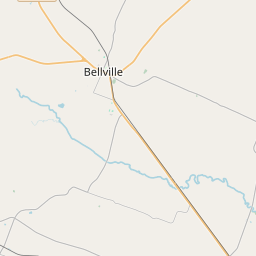Findeisen Cemetery







Graves: At least 2 (1867-)
Source: Local history notes; Austin CHC, Austin County Cemeteries; Bellville Historical Society
To address the problem of cemetery destruction and to record as many cemeteries as possible, the Texas Historical Commission offers the Historic Texas Cemetery designation.
The Historic Texas Cemetery designation was developed in 1998 to help protect historic cemeteries by recording cemetery boundaries in county deed records to alert present and future owners of land adjacent to the cemetery of its existence. Every county in Texas has at least one cemetery designated as a Historic Texas Cemetery through this program. The HTC designation is the first step toward preservation of a historic cemetery.
A cemetery is eligible for designation if it is at least 50 years old and is deemed worthy of recognition for its historical associations. The very nature of a cemetery being a landmark of a family’s or community’s presence is considered to validate the criteria of historical associations. Any individual, organization, or agency may submit a request for designation.
The state of Texas was once an independent country known as the Republic of Texas. It gained independence from Mexico in 1836 and was a separate nation until it was annexed by the United States in 1845.
In 1824, Austin County was officially created as one of the original 23 counties of Texas. The county was named in honor of Stephen F. Austin and served as a major center for the colonization of Texas. During this time, settlers began to arrive and establish farms, bringing with them their unique cultures and traditions.
Austin County also played a significant role in the Texas Revolution. In 1832, local colonists held the Turtle Bayou Resolutions, which voiced their support for Antonio López de Santa Anna, who was then the leader of Mexico. However, as tensions escalated, the colonists became part of the rebellion against Mexican rule, leading to the famous Battle of San Jacinto in 1836. This battle marked a major turning point in Texas history, resulting in the defeat of Santa Anna's forces and the eventual independence of Texas.
Throughout the years, Austin County continued to develop and thrive. The county seat, Bellville, was established in 1848 and has remained an important cultural and economic center. The arrival of the railroad in the late 19th century further contributed to the growth of the county, connecting it with other regions. Today, Austin County is known for its rich agricultural heritage, historical landmarks, and vibrant community, making it a unique and significant part of Texas history.
Austin County Timeline
This timeline provides a glimpse into the major events and milestones that have shaped the history of Austin County, Texas.
- 1821 - Austin County is established as one of the original 23 counties in Texas.
- 1831 - Stephen F. Austin, the "Father of Texas", passes away and is buried in Austin County.
- 1836 - Texas gains independence from Mexico, leading to an influx of settlers in Austin County.
- 1856 - The town of Bellville is established as the county seat of Austin County.
- 1861-1865 - Austin County residents actively participate in the American Civil War.
- 1878 - The Texas state legislature formally recognizes Austin County as the "Cradle of the Republic".
- 1887 - The San Felipe and Southwestern Railroad connects Austin County to the rest of Texas.
- 1907 - The Brazos River floods Austin County, causing significant damage and loss of life.
- 1965 - The Stephen F. Austin State Park is established in Austin County.
- 1992 - The Austin County Historical Commission is formed to preserve the county's history and heritage.
- Present - Austin County continues to thrive as an agricultural and historic region in Texas.